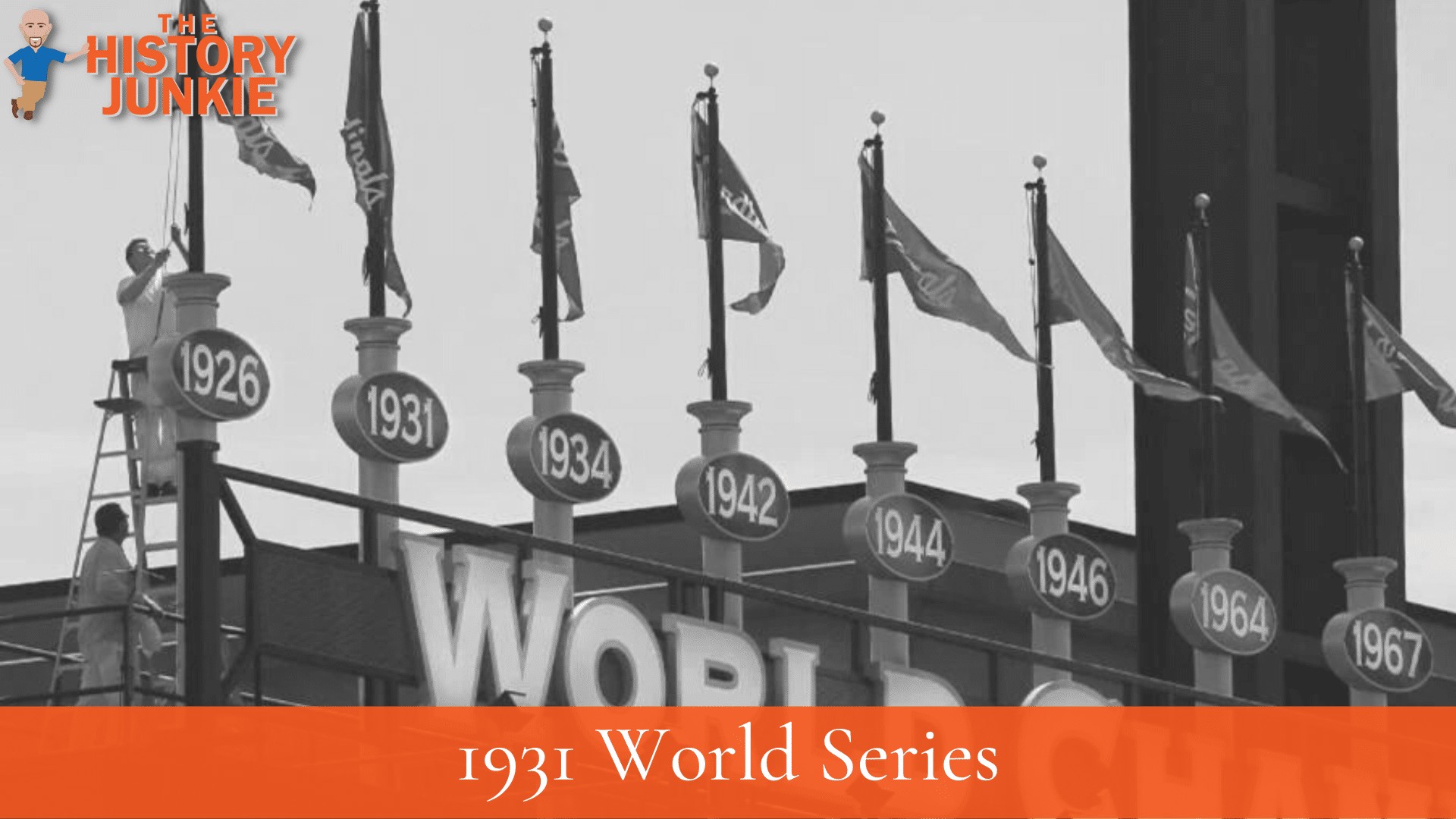
Jump to:
- #1. Barleigh Grimes Primary Pitch Was The Illegal Spitball
- #2. The A's Took A Quick Lead With A Game 1 Win
- #3. Some Regard The 1931 Athletics As The Greatest Team In MLB History That Didn't Win
- #4. The Athletics Were 13 ½ Games In Front Of The Yankees
- #5. Connie Mack's Final World Series Appearance
- #6. Pepper Martin Dominated On Offense During The Series
- #7. The Cardinals Barely Escaped Game 7
#1. Barleigh Grimes Primary Pitch Was The Illegal Spitball
By the 1931 World Series, the spitball pitch had been banned by Major League Baseball, but those still using it at that time were "grandfathered" or permitted to keep throwing it for the balance of their big-league careers.
One of those who "wet his pill" still active in 1931 was Burleigh Grimes, with two Series starts, two wins, and seven innings of no-hit pitching in Game 3.
"Wild" Bill Hallahan started and won the other two for the Cards and saved Game 7.

#2. The A's Took A Quick Lead With A Game 1 Win
The A's scored four runs in the third, enabling Lefty Grove to win Game 1 despite giving up 12 hits, three by Pepper Martin.
The Cardinals struck first in the first inning on three consecutive one-out singles, the last of which to Jim Bottomley scoring a run.
After a strikeout, Martin's double scored another run. In the top of the third, with runners on first and second, Mule Haas's double scored Philadelphia's first run.
Two consecutive walks by Paul Derringer loaded the bases and tied the game, and then Jimmie Foxx's single scored two more runs.
In the top of the seventh, Al Simmons's two-run home run put Philadelphia up 6–2, the game's final.

#3. Some Regard The 1931 Athletics As The Greatest Team In MLB History That Didn't Win
The Athletics in the 1931 World Series were primed and favored to win a 3rd straight World Series. Their roster was full of Hall of Fame players, and they had easily won the American League.
However, due to excellent pitching and timely offense, the Cardinals managed to finally get a victory over the Athletics and take the series in 7 games.
This team is largely forgotten because of what came afterward. Within the next three years, Connie Mack sold his best players and began to rebuild. The Athletics would fall below .500, and the players he sold went on to have great careers.
#4. The Athletics Were 13 ½ Games In Front Of The Yankees
The Yankees had an amazing year and an unbelievable offense.
They had six hitters that batted over .300, along with multiple batters with over 100 RBIs.
Lou Gehrig and Babe Ruth had monster seasons, with each hitting over .340 (Ruth batted .373) and both hitting 46 home runs.
With all that said, they did not even come close to the Athletics that year. This is due to the complete dominance the A's had over the Cleveland Indians, Detroit Tigers, and Chicago White Sox.
#5. Connie Mack's Final World Series Appearance

The Athletics had captured their third straight American League pennant, winning 107 games (and 313 from 1929–31).
But this would prove to be the final World Series for longtime A's manager Connie Mack.
As he did after the Boston "Miracle Braves" swept his heavily favored A's in the 1914 Series, Mack would break up this great team by selling off his best players, this time out of perceived economic necessity rather than pique and competition from the short-lived Federal League.
It would be the A's last World Series appearance in Philadelphia, and it would be 41 years and two cities later before the A's would return to the Fall Classic after their successive moves to Kansas City in 1955 and Oakland in 1968.
This would also be the city of Philadelphia's last appearance in the Series until 1950.
#6. Pepper Martin Dominated On Offense During The Series

The only day-to-day player in the Cardinals' lineup who was different in 1931 was the "Wild Horse of the Osage", Pepper Martin 27-year-old rookie who had spent seven seasons in the minor leagues.
He led his team for the Series in runs scored, hits, doubles, runs batted in, and stolen bases, and also made a running catch to stifle a ninth-inning rally by the A's in the final game.
#7. The Cardinals Barely Escaped Game 7
The Cardinals struck first in the first when, with runners on second and third via two singles and a bunt groundout, a wild pitch by George Earnshaw to Pepper Martin scored a run, and a strike three wild pitch to Ernie Orsatti scored another.
A two-run home run by George Watkins in the third gave the Cardinals a 4-0 lead, but the Athletics scored two in the ninth on Doc Cramer's bases-loaded two-run single, Hallahan getting the last out, saving the victory for Grimes.
Despite going 0–for–6 in Games 6 and 7, Pepper Martin was the leading hitter of the series with a .500 (12–for–24) batting average.
